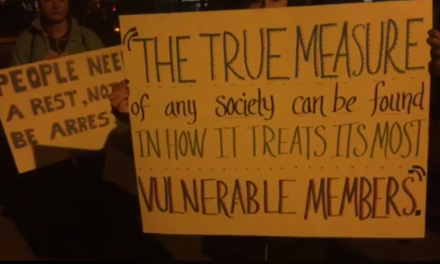From Atlantic Cities:
Beginning in the mid-1990s, the federal government shifted the way it subsidizes housing for the low-income. Out were mega-public housing projects like St. Louis’ Pruitt-Igoe and Chicago’s Cabrini-Green. In were housing vouchers and tax credits designed to disperse people in need of housing help out of these infamous pockets of poverty.
Crime rates in cities across the country happened to be falling around this same time. But many communities far from places like Cabrini-Green feared that a program designed to disperse the poor would also disperse crime associated with them – and straight into more pristine neighborhoods. This idea has persisted for nearly 20 years. And it’s prominent among the objections often raised to adding subsidized housing into new neighborhoods and suburbs (see also: the schools will get overcrowded! The traffic will get worse! Everyone’s property value will fall!).
“Crime and violence-based fear is something that’s certainly been used very, very effectively for decades in this country,” says Michael Lens, an assistant professor of urban planning at UCLA. “And many of our cities are certainly the worse for it in terms of land use and equitable neighborhood opportunity.”
In theory, there are two logical outcomes to this change in housing policy. One suggests that traditional public housing concentrates crime “hot spots,” enabling police to more effectively monitor them. Scatter the people and you not only scatter the criminals; you also make it harder for law enforcement to keep track of them, driving citywide crime rates up. A widely read 2008 story in The Atlantic by Hanna Rosin argued this hypothesis in the city of Memphis.
The second narrative proposes instead that traditional public housing concentrates poverty, creating the environments – places without opportunity, good schools, employment – that drive crime. Disperse the people, and you break up that concentration, theoretically reducing crime.
A growing stack of research now supports the second hypothesis that housing vouchers do not in fact lead to crime. Lens has just added another study to that literature, published in the journal Urban Studies. He looked at crime and housing data in 215 cities between 1997 and 2008 – controlling for national and regional crime trends, demographic and income variables, employment rates and more – and found “virtually no relationship” between the prevalence of Housing Choice Voucher Program households and higher crime at the city level or in the suburbs. In previous research, Lens and colleagues had investigated the same question at the neighborhood level.
“Although communities with a higher prevalence of voucher households appear to be higher in crime,” Lens writes, “there is no evidence that this is due to voucher households increasing crime.”
Lens adds, over the phone, that he was hardly surprised by that result.
“There has never really been a lot of empirical evidence for the idea that people that live in subsidized housing commit a fantastically higher amount of crime,” he says. “Nor is there really much evidence that there’s this crime spillover into surrounding neighborhoods.”
As the voucher program has expanded, however, with a corresponding decrease in public housing units, more communities are encountering the prospect of these families in their midst. Today, about 50 percent of voucher households are in the suburbs.

The decline in national crime, as seen alongside the rise in housing vouchers and the Low Income Housing Tax Credit. From “The Impact of Housing Vouchers on Crime in US Cities and Suburbs” by M. Lens in Urban Studies.
It’s probably overly optimistic to think that this evidence will disarm bitter local controversies over the need for subsidized housing. But Lens puts it like this: “The main thing is that a very small percentage of poor people commit any sort of crimes at all. So the idea that the random five or 10 low-income households that might move into your large neighborhood are going to impact your life in a negative way is fairly unlikely.”
“But I understand that cities have been grappling with this for years, decades,” he says. “That’s how we came to be a country of very segregated land use when it comes to economics and income.”




